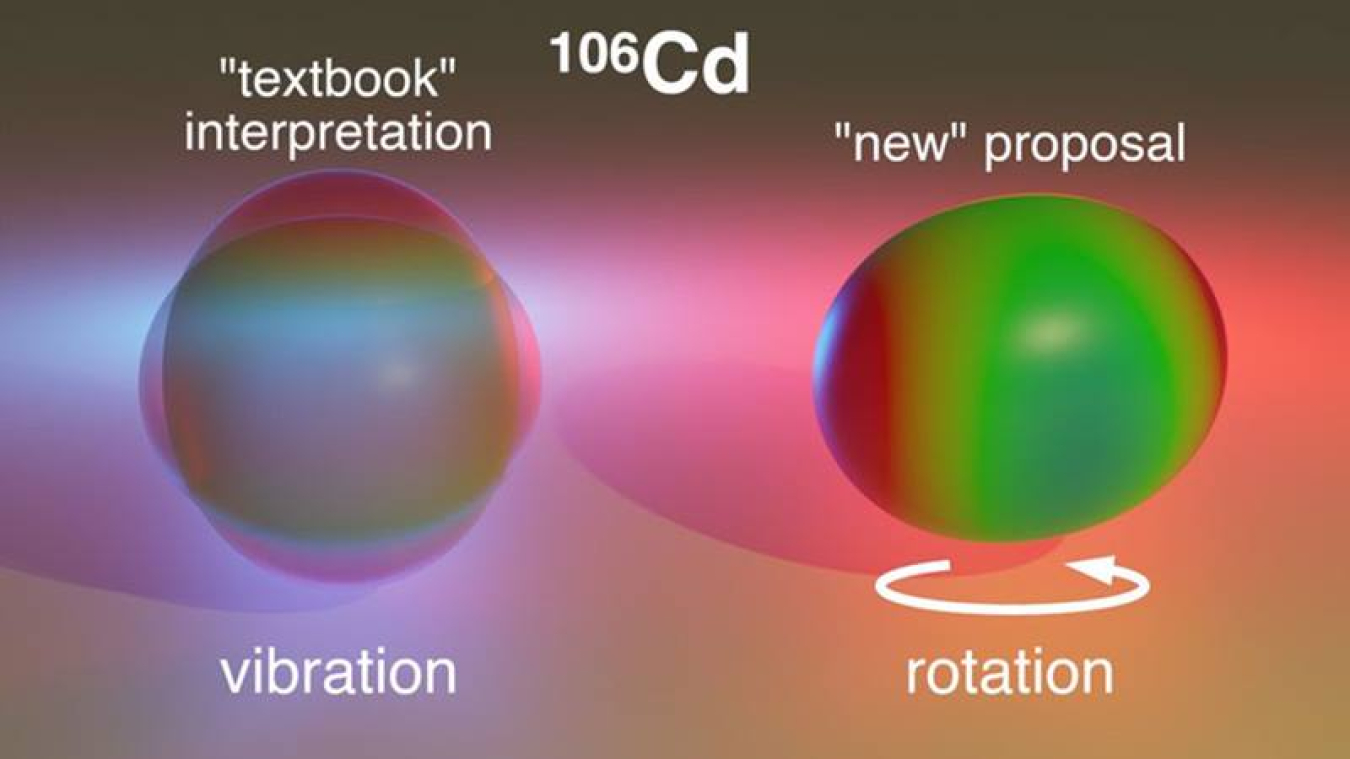
The Science
Atomic nuclei take a range of shapes, from spherical (like a basketball) to deformed (like an American football). Spherical nuclei are often described by the motion of a small fraction of the protons and neutrons, while deformed nuclei tend to rotate as a collective whole. A third kind of motion has been proposed since the 1950s. In this motion, known as nuclear vibration, atomic nuclei fluctuate about an average shape. Scientists recently investigated cadmium-106 using a technique called Coulomb excitation to probe its nuclear shape. They found clear experimental evidence that the vibrational description fails for this isotope’s nucleus. This finding is counter to the expected results.
The Impact
This research builds on a long quest to understand the transition between spherical and deformed nuclei. This transition often includes vibrational motion as an intermediate step. The new result suggests that nuclear physicists may need to revise the long-standing paradigm describing how this transition occurs. Scientists have not yet answered the question of what behavior takes place during this transition, but new evidence points to a description based on rotational motion of a nucleus together with a reorganization of its outermost protons and neutrons. The results make clear that scientists need more data to shed light on nuclei they have traditionally thought to be vibrational.
Summary
A multinational team of nuclear physicists used the Argonne Tandem Linac Accelerator System (ATLAS), a DOE Office of Science user facility at Argonne National Laboratory, to accelerate a beam of cadmium-106 nuclei to nine percent of the speed of light and direct it onto a 1-micron thick lead-208 target foil. During the collision, gamma rays from the cadmium-106 nuclei were emitted and detected by the Gamma-Ray Energy Tracking In-beam Nuclear Array (GRETINA), and the recoiling lead and cadmium nuclei were detected by the Compact Heavy Ion Counter 2 (CHICO2). The intensities of the gamma rays provided a measure of the probability of exciting cadmium-106 nuclei via the electromagnetic interaction, from which the electromagnetic properties of cadmium-106 were established.
The researchers integrated these properties into a model-independent measure of the nuclear shape and compared the result to expectations from several leading nuclear theories. The results indicate that at low-energies, cadmium-106 is not vibrational but instead more in line with the rotation of a slightly deformed triaxial rotor – a shape akin to a deflated American football.
Contact
Timothy Gray
Oak Ridge National Laboratory
[email protected]
Funding
This research was supported by the Department of Energy Office of Science, Office of Nuclear Physics, and used resources of Argonne Tandem Linac Accelerator System (ATLAS), a DOE Office of Science user facility at Argonne National Laboratory.
Publications
Gray, T.J., et al., E2 Rotational Invariants of 01+ and 21+ States for 106Cd: the Emergence of Collective Rotation. Physics Letters B 834, 137446 (2022). [DOI: 10.1016/j.physletb.2022.137446]
Related Links
Oak Ridge National Laboratory video of cadmium-106 motion.
Scraped from https://www.sourcearu.com




